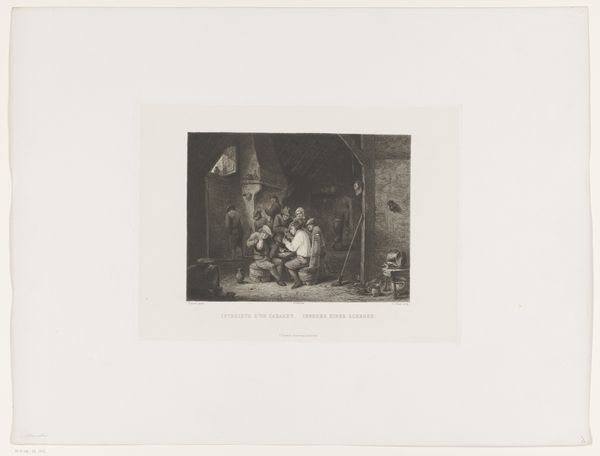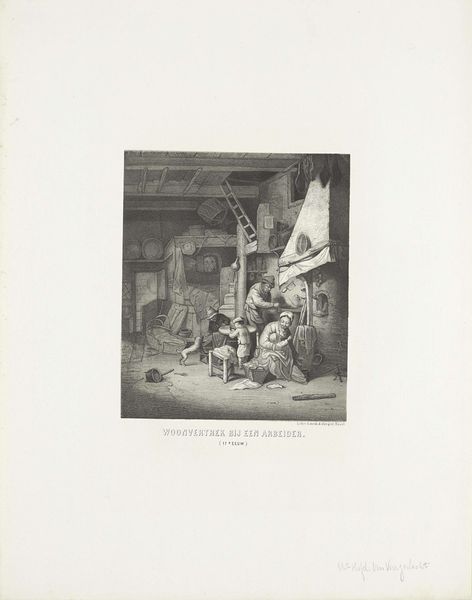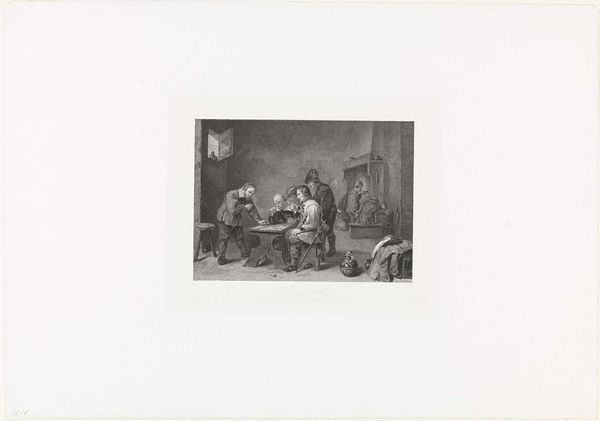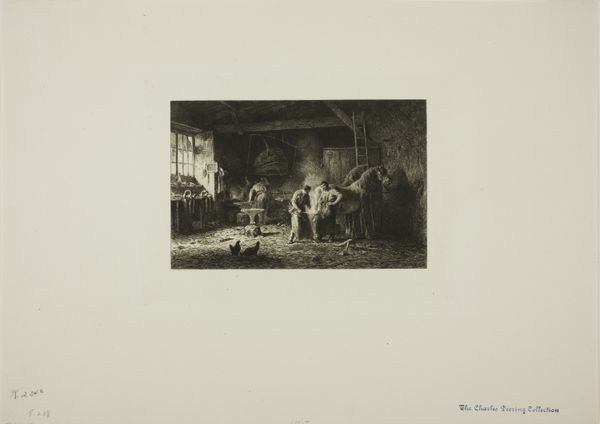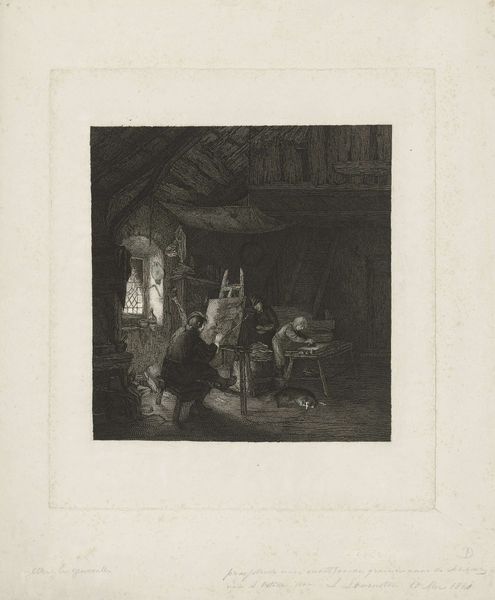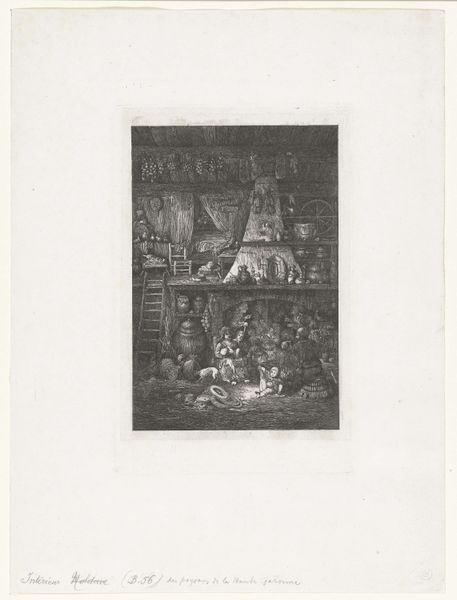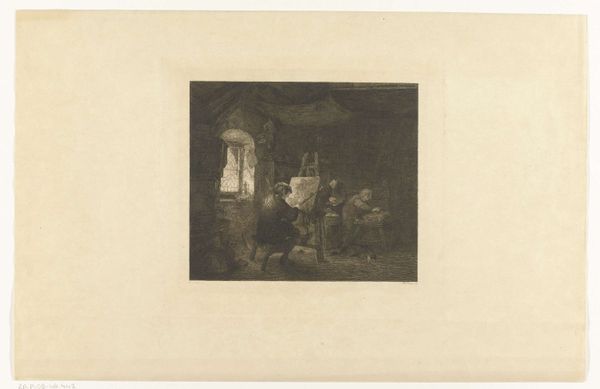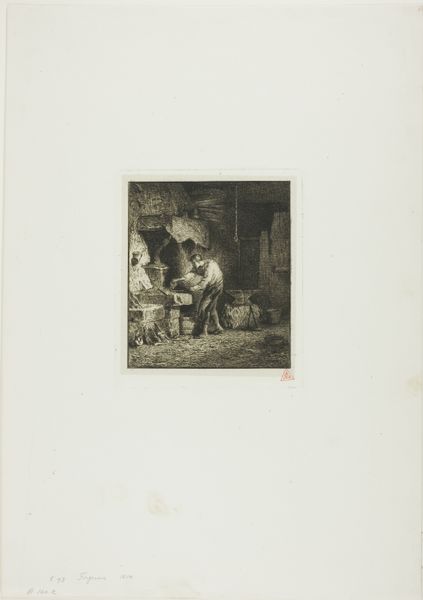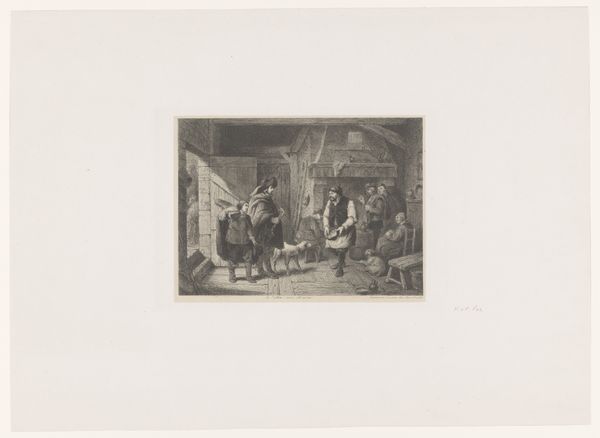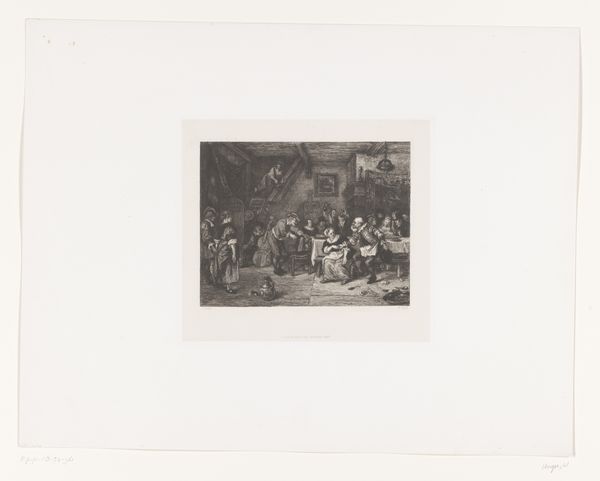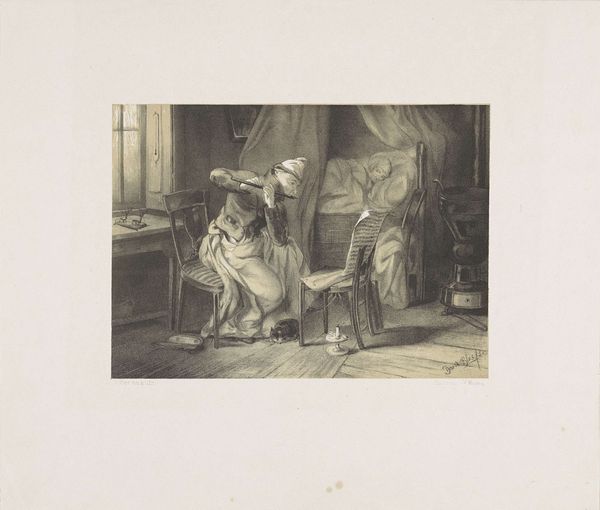
drawing, lithograph, print, etching
#
drawing
#
lithograph
# print
#
etching
#
dog
#
genre-painting
#
realism
#
monochrome
Dimensions: height 240 mm, width 271 mm
Copyright: Rijks Museum: Open Domain
Curator: The artwork before us, housed here at the Rijksmuseum, is entitled "Boerengezelschap binnenshuis," dating back to 1861 and crafted by Christiaan Lodewijk van Kesteren. It’s realized through drawing, lithography, etching, and printmaking techniques. Editor: My first impression is how intimate and domestic this scene feels despite the obvious roughness. The textures seem palpable even through the monochrome rendering, almost tactile. It's also busy—every corner teems with life. Curator: Genre paintings such as this were highly popular during the Realist movement. Artists like Van Kesteren sought to portray everyday life with as much accuracy as possible, moving away from romanticized depictions. This piece shows a farmer's gathering inside their home, reflecting the social context and customs of rural life at the time. We also see how artistic depictions influence political opinions in this context. Editor: Indeed. It makes you wonder about the symbols present here, even subtle ones. For example, the presence of a dog usually suggests loyalty and fidelity, or perhaps even a kind of watchfulness over the scene. Also, note the domestic space itself-- a site of emotional processing for people as well as the source of labour. How much has the perception of an intimate community such as this one changed since it was created? Curator: The level of detail serves that ambition of accuracy, and challenges romanticism by revealing quotidian existences, emphasizing the dignity of everyday rural people. It underscores the public role of art during the 19th century, striving for social commentary and realism. Editor: The monochrome reinforces a sense of earnest observation. It prompts us to connect with the imagery and symbols to glean the deeper meanings embedded within the scene. Curator: Seeing it within a modern context also offers a bridge from the mid-19th century into conversations about art’s continuing impact as both documentation and reflection of how humans assemble themselves in various formations. Editor: I think, regardless of any movement in art, humanity has always desired visual markers of its present realities, so images like these become precious windows into shared experiences. It really speaks to our capacity to see art as a continuous conversation between what was, is, and may be.
Comments
No comments
Be the first to comment and join the conversation on the ultimate creative platform.
